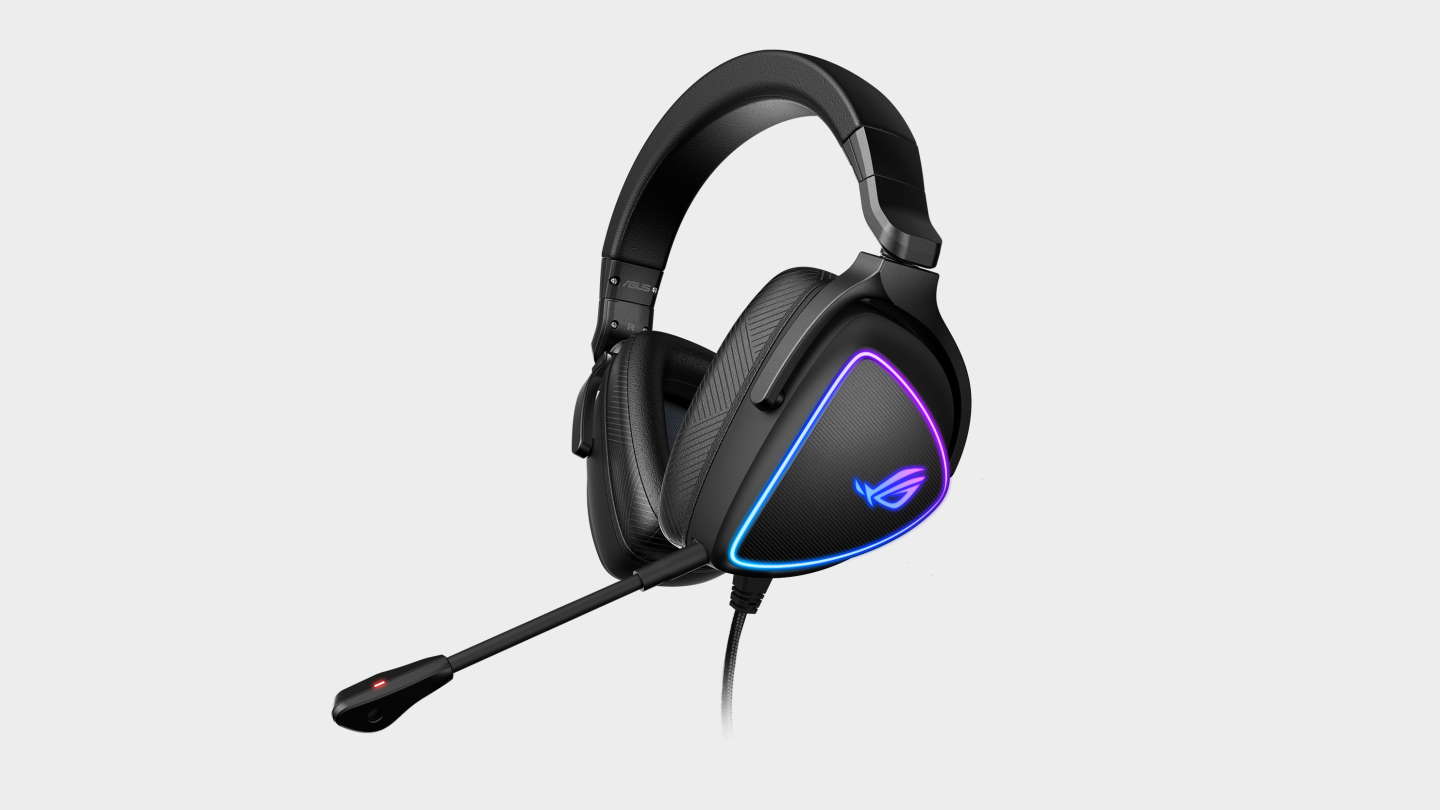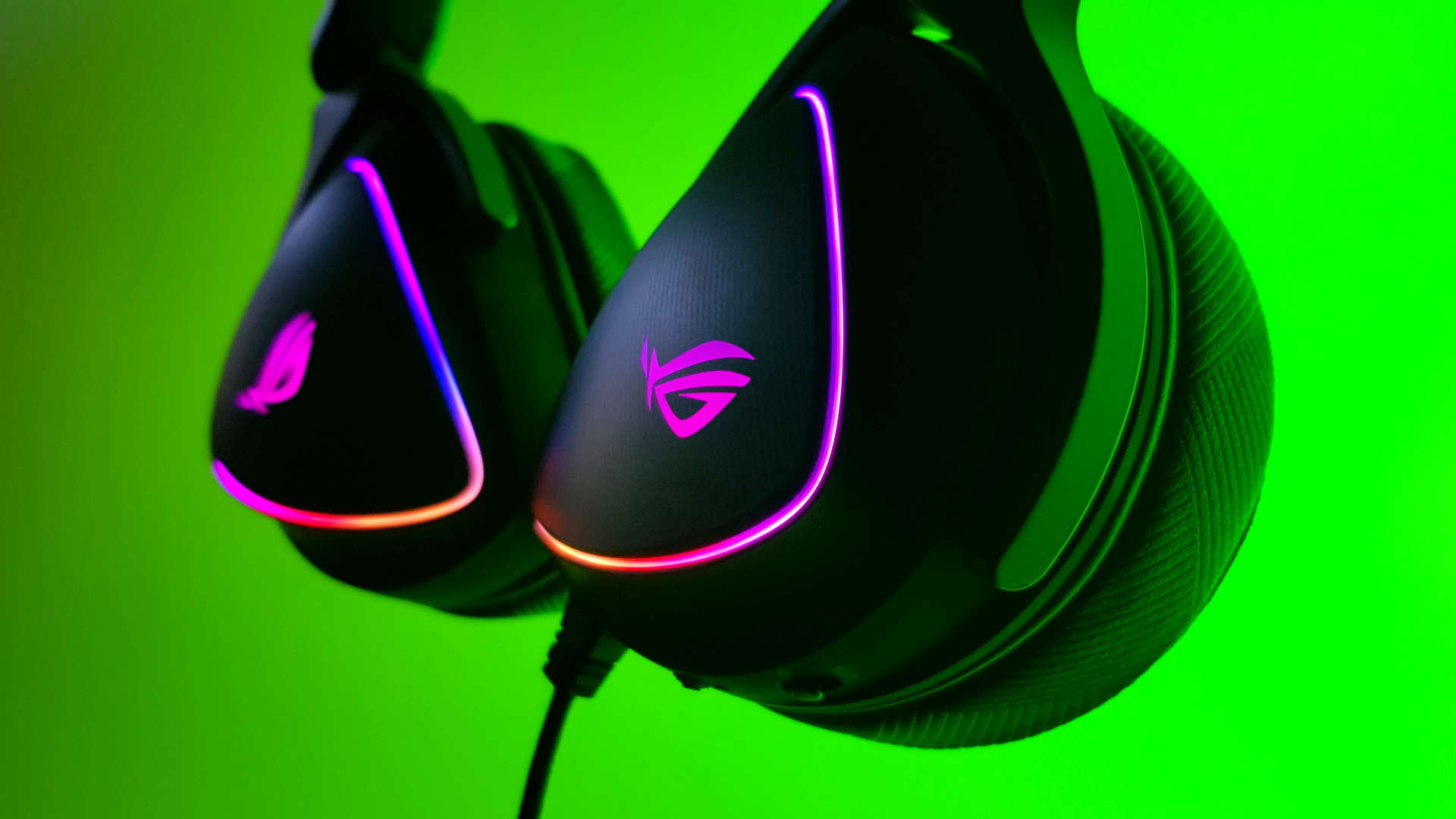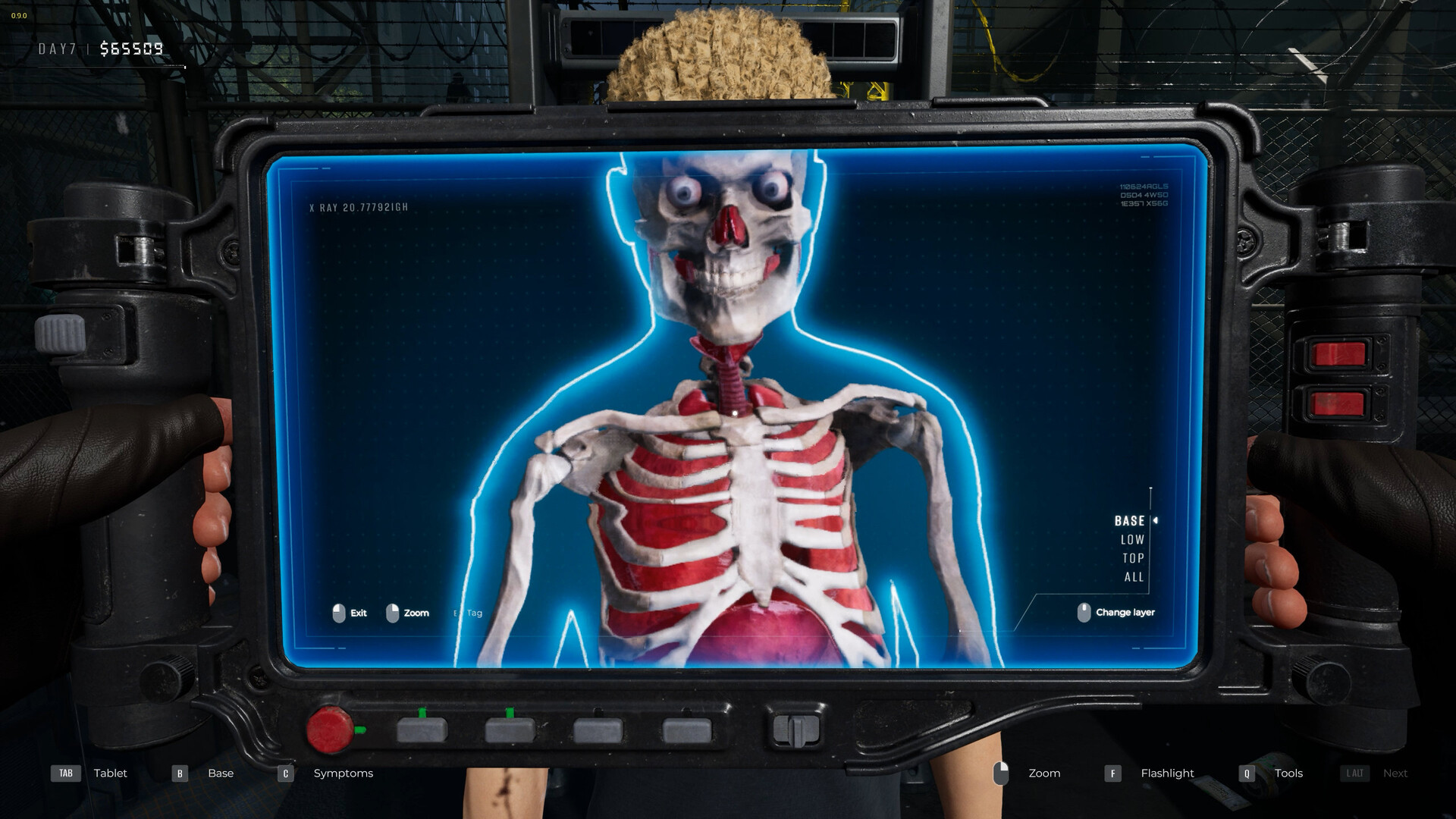Our Verdict
A great-sounding headset for music, just fine for gaming, but an uncomfortable fit for serious session time with either.
For
- MQA support is ace
- High-fidelity music sounds incredible
- Type-C connection extends beyond PC
Against
- Uncomfortable fit
- Middling game audio
PC Gamer's got your back
When it comes to the Asus ROG Delta S I came for the MQA audio, hung around listening to some incredible-sounding music, and then bailed when I just couldn't get the damned set to sit comfortably on my head. I'm a bad audiophile, one not prepared to endure an uncomfortable fit for the stellar aural experience Tidal was delivering through the Asus cans.
I'm also a bad audiophile having ditched a fantastic set of open-back Audeze LCD-1, with their stunning planar magnetic drivers—for the wireless simplicity of Razer's BlackShark V2 Pro headset. I've traded stunning sound for ease of use before and, unfortunately for Asus and its ROG Delta S, these aren't the cans that are going to change my ways.
And, maybe more to the point, they're not going to make it into our list of the best gaming headsets either.
The $200 (£190) high-res Asus headphones market themselves almost as all things to all people. With a USB Type-C connection and MQA support Asus is matching audiophiles with gamers of all kinds, with PlayStation 5, PC, and Switch compatibility.
To be entirely fair, they do have multi-zone RGB lighting around the earcups, so are obviously more weighted towards the gamer. And I'm okay with that on a pair of wired headphones. Some cycling lights mean little to me as the person wearing them, but aren't the drain on resources that they would be on a wireless set.

If that's what makes them gaming-focused, it's the MQA—or Master Quality Authenticated—technology support that gives them their audio enthusiast leanings. MQA is a technology that essentially uses a form of digital origami to fold up the highest resolution master quality audio files into small enough packages to be streamed or stored on mobile devices.
Standard lossless high resolution audio files take up a huge amount of space, but if you have something capable of encoding and decoding MQA you can use far smaller files but ones that sound like original masters direct from the studio. It's doable in software, however, and so your PC is more than capable of running MQA files itself. That means the sound can be incredible on good headphones and it's the main reason I subscribe to Tidal each month.
Keep up to date with the most important stories and the best deals, as picked by the PC Gamer team.
With the built-in ESS9281 Pro DAC, and the decent frequency response of the Delta S headset, these are absolutely fantastic 'phones to listen to music on from a purely aural perspective. I'm also digging how they sound with the new, softer soundscape of the Windows 11 Insider Preview.
But I'm not digging how they actually sound in-game nearly as much.
They're not bad but they really don't have the same 'wow' factor when the bullets are flying in Battlefield V or when burning rubber and trading paint (and, y'know, more bullets) in GTA. Where there is detail in the audio when playing music, there's something that feels just a little flat when it comes to gaming.

That's maybe down to the initial flatness of EQ in the accompanying Asus Armoury Crate software, but it was still something I couldn't shake even once I'd delved into the sometimes clunky software (which, btw, seems to have somehow deleted one of my browsers while updating). There are sound optimisation settings for games and general audio, with myriad buttons and levels, but still no amount of tweaking could deliver me the rich game audio I was craving.
It just feels kinda hollow when I'm gaming, no matter what I was able to do to through the software. Though, honestly, that's maybe just nitpicking because I'm really into the aural experience I get with the Blackshark V2 Pro cans generally sitting atop my skull. Even with a flat EQ the Razer set has far more depth to its gaming sound.
The game audio isn't why I'm not going back to the ROG Delta S, however, it's the fit.
I don't know whether the polystyrene head they've got in the design lab is some novelty oversize one, but at the headband's smallest setting they don't sit right on my, maybe toddler-sized cranium.
It squeezes in almost too tightly just above my ears and then feels needlessly loose below them. The upshot of that is that for a trad tech nerd with glasses the headset quickly becomes very uncomfortable. The strangely angular earcups might have something to do with that, but I'm blaming the headband.
Whatever, if a headset isn't comfortable enough to sit through a whole MQA album, or a Conquest match in Battlefield V, then it's not for me. And, unless you've got a head the size of a beach ball, then I'm going to suggest it's probably not for you. Sure, they can sound great with a serious audio source, and deliver a serviceable gaming experience, but the aural experience counts for little if you want to pull them from your head after ten minutes. At most.
A great-sounding headset for music, just fine for gaming, but an uncomfortable fit for serious session time with either.

Dave has been gaming since the days of Zaxxon and Lady Bug on the Colecovision, and code books for the Commodore Vic 20 (Death Race 2000!). He built his first gaming PC at the tender age of 16, and finally finished bug-fixing the Cyrix-based system around a year later. When he dropped it out of the window. He first started writing for Official PlayStation Magazine and Xbox World many decades ago, then moved onto PC Format full-time, then PC Gamer, TechRadar, and T3 among others. Now he's back, writing about the nightmarish graphics card market, CPUs with more cores than sense, gaming laptops hotter than the sun, and SSDs more capacious than a Cybertruck.


